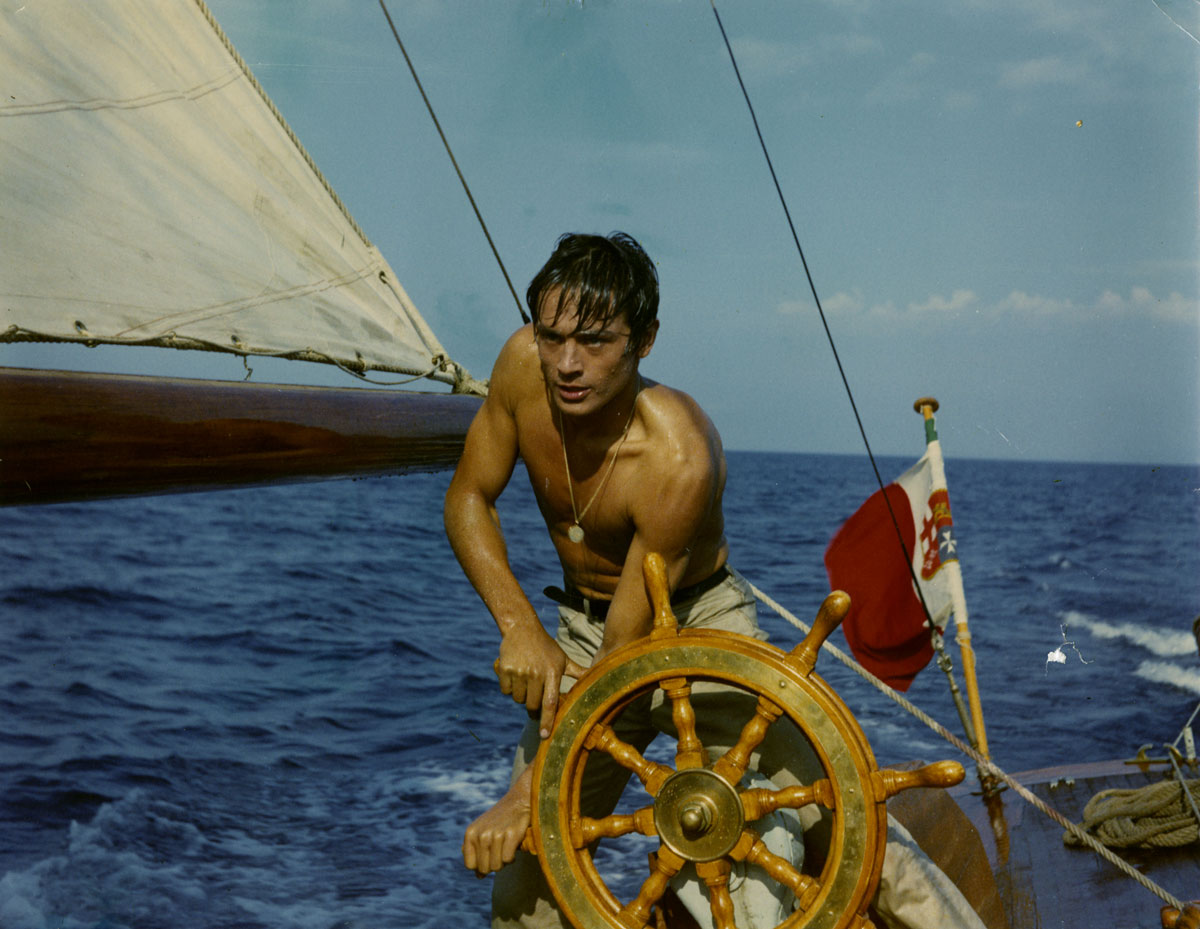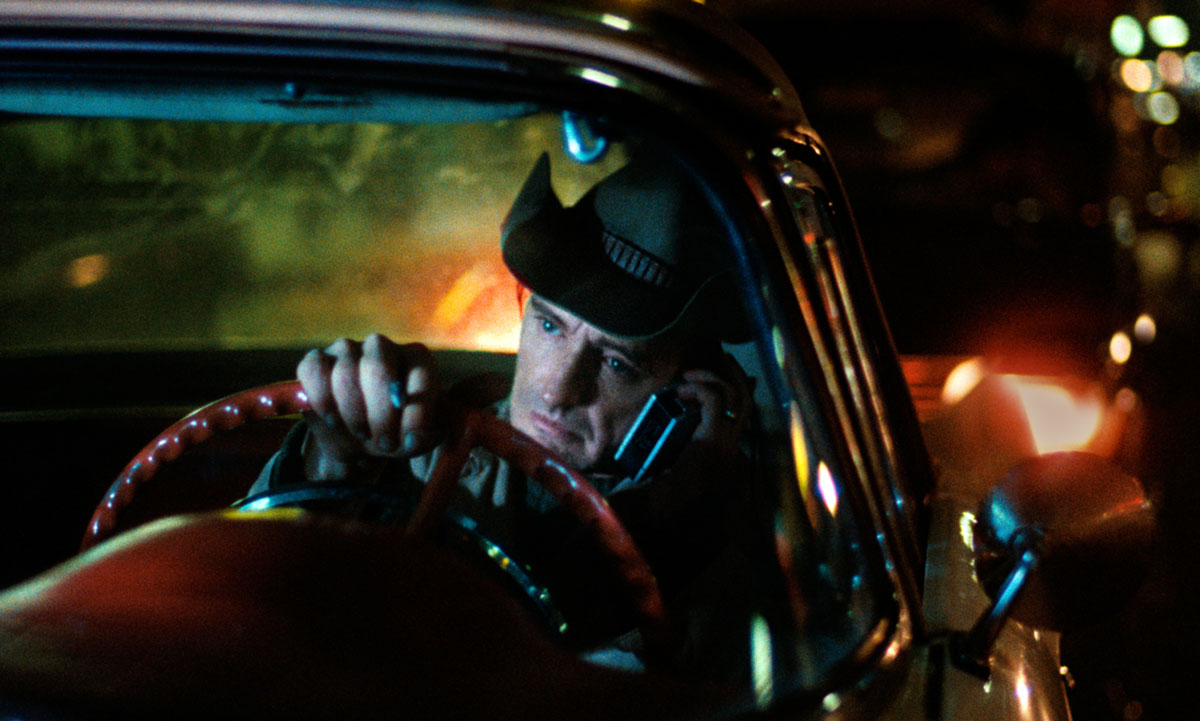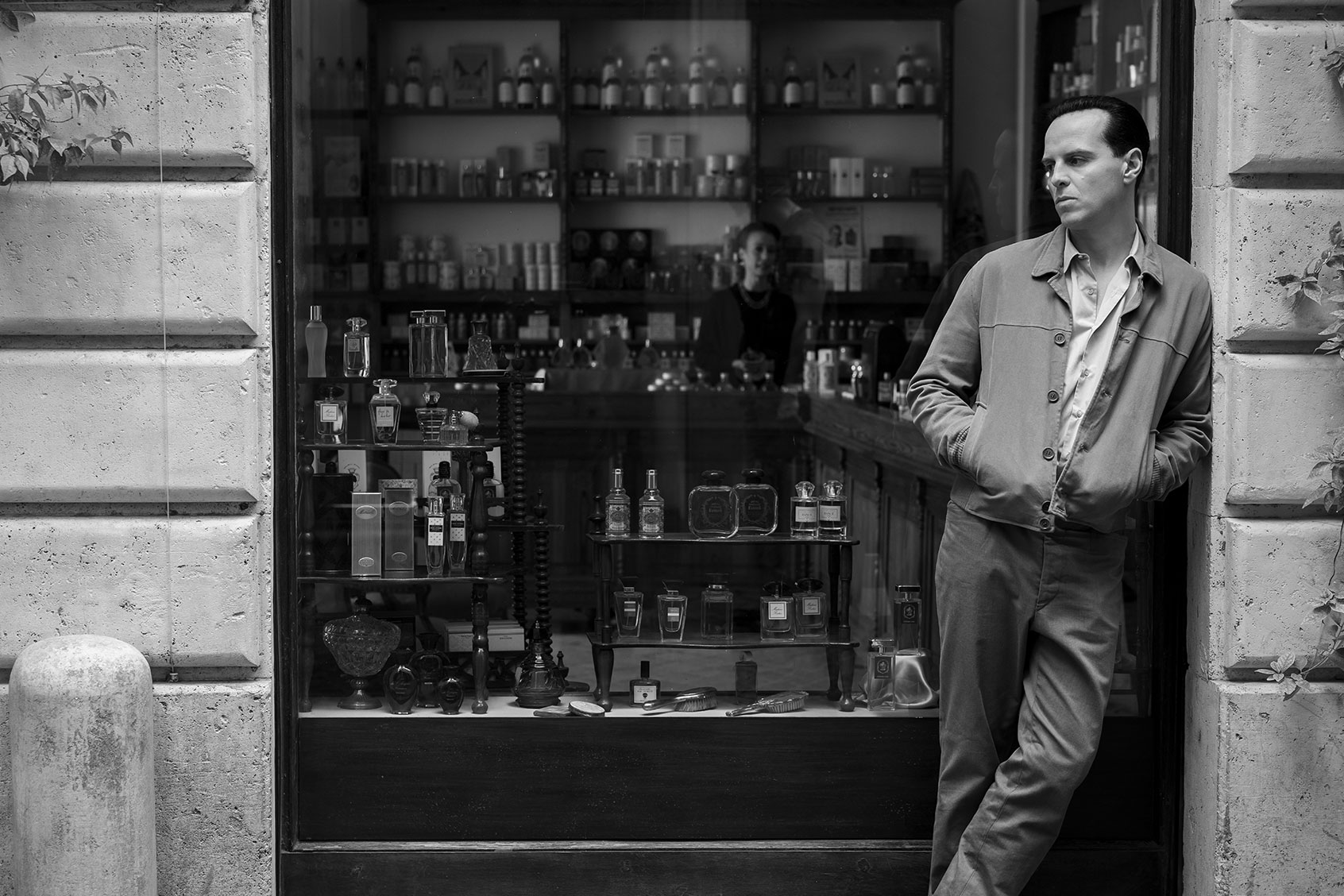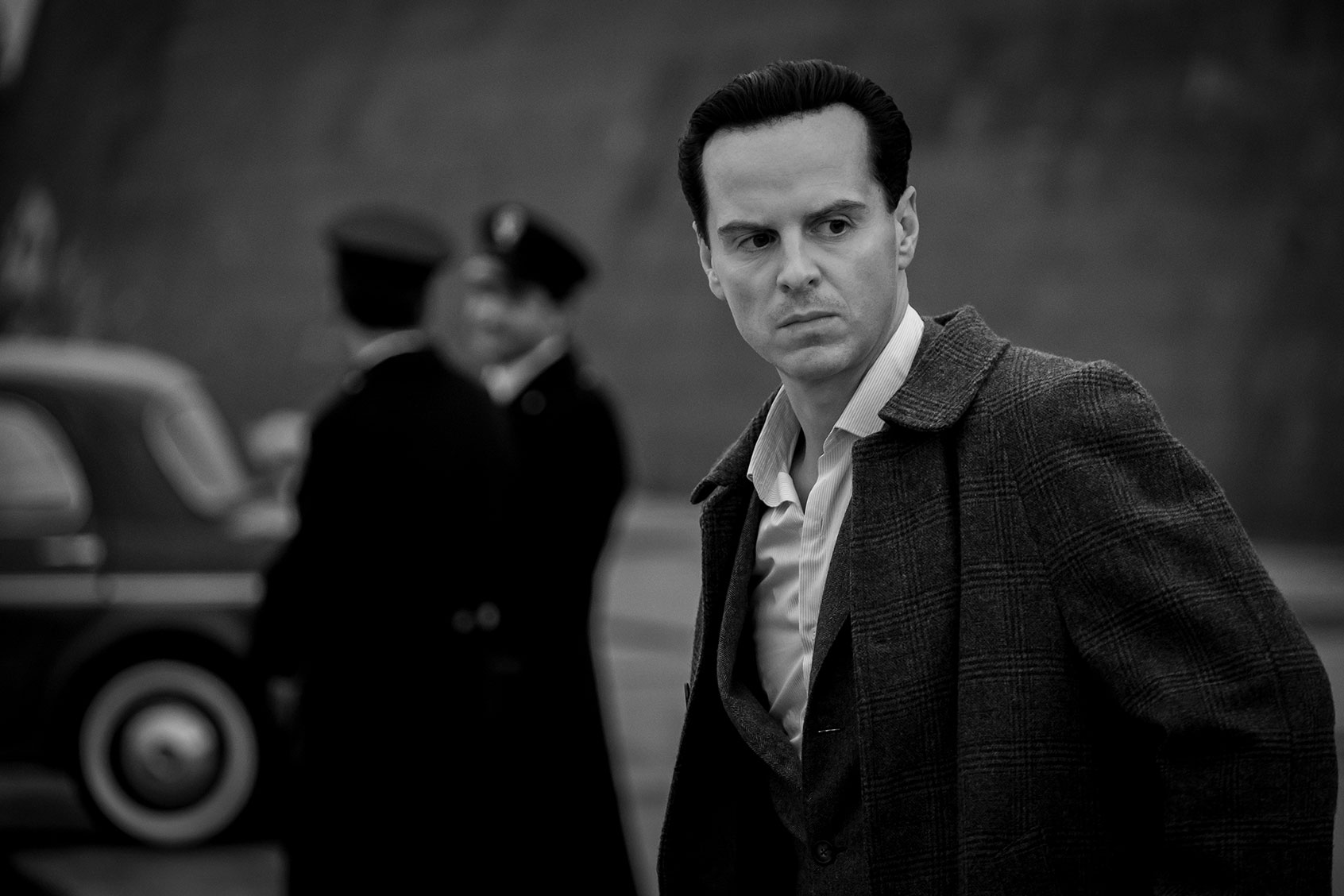Who doesn’t want to be someone else from time to time? That question is at the heart of author Patricia Highsmith’s most famous character, the aloof Tom Ripley, “a liar, a forger, and an impersonator” and the titular talented character from the 1955 novel “The Talented Mr. Ripley.”
According to biographers, Highsmith mirrored Ripley in some ways. She was queer when it was not safe to be out, and lived for a spell in Europe where she didn’t quite fit in with the moneyed class. The character of Ripley can be seen as a kind of auto-fiction, a way for Highsmith to live as someone else.
And what a character! Ripley’s confidence is as seductive as it is persuasive. Tom can make others believe he is someone else — specifically, that he is Dickie Greenleaf, the wealthy scion he was asked to bring home from Italy. But how deep do his lies go, and how much does he believe? Is he slipping into psychosis?
Upon meeting Dickie, Tom first only wants to be with him. Then, after befriending Dickie, Tom only wants to be him. He resorts to murder to fulfill his desires, but Tom considers this less a crime — Dickie was punished for being rude to Tom — and more a sense of self-preservation. Moreover, this mindset justifies subsequent murders of people who can expose Tom as Dickie.
Perhaps what is so great about “The Talented Mr. Ripley,” and why this unscrupulous antihero endures is because (depending on the version), Tom Ripley is a sociopath who gets away with murder — and we want him to.
But one could also read the books (and subsequent film adaptations) as a critique of a self-loathing gay man. Ripley’s thinly veiled homosexuality (in an era when that was criminal) is about Ripley not fitting in, and not being discovered for his crime(s). He wants to escape who he really is, and he does that by becoming who he (shouldn’t) desire.
Perhaps this was Highsmith’s very point in creating the character, who was featured in five Ripley novels. The first book, “The Talented Mr. Ripley,” cemented her reputation as a thriller writer. Highsmith won the Edgar Allan Poe Scroll (a special award) for best novel from the Mystery Writers of America, and the Grand Prix de Littérature Policière for the French edition. She followed it up with four sequels: “Ripley Under Ground” in 1970; “Ripley’s Game” in 1974; “The Boy Who Followed Ripley” in 1980; and “Ripley Under Water” in 1991.
Various screen adaptations were also made. To prepare for the new Netflix series “Ripley,” here is a timeline of cinematic Tom Ripleys.
 Alain Delon in "Purple Noon" (Courtesy of the Criterion Collection)
Alain Delon in "Purple Noon" (Courtesy of the Criterion Collection)Alain Delon is the swooniest Tom Ripley in this first screen adaptation of Highsmith’s “The Talented Mr. Ripley.” A forger who reportedly “can do anything,” this Ripley cares only about money. He is in Italy to convince the film's version of Dickie, Philippe Greenleaf (Maurice Ronet), to return to the States, but he fails at that task because Philippe will not readily comply. Losing out on the $5,000 he was promised by Philippe’s father, Ripley resorts to murder. He then becomes Philippe, hiding his crime, emptying Philippe’s bank account and dispatching anyone who stands in his way.
The pleasure of the gorgeous “Purple Noon” is watching the gorgeous Delon as Ripley cover his tracks as the noose around him tightens. He may wince at times — he is often close to being caught — but he is clever in how he manipulates others. But can he get away with it? There are some marvelous set pieces, including an extended sequence on a claustrophobic boat and a narrow escape from an apartment that ratchet up the tension. Delon delivers a star-making performance in this classic film even if the ending deviates from the book (which irked Highsmith).
Available on Criterion Chanel
 Dennis Hopper in "The American Friend" (Courtesy of the Criterion Collection)
Dennis Hopper in "The American Friend" (Courtesy of the Criterion Collection)Anthony Minghella’s fabulous, jazzy adaptation may be the screen version that gets closest to the tone of Highsmith’s novel. It is certainly the gayest “Ripley.” Matt Damon captures Tom Ripley’s “flagrant casualness” best; he always seems to be in the right place or say the right thing, and it appears effortless but surely, he is calculating. Tom is upfront with Dickie Greenleaf (Jude Law) when he tells him his talents are “forging signatures, telling lies, and impersonating practically anybody.” And as Tom comes to love the way Dickie lives, Tom will also stop at nothing until it becomes his. Tom soaks in Dickie’s life, and a scene where Tom ogles Dickie in and out of the bath, makes it clear how much and how badly Tom wants to possess Dickie. Which is why Dickie is not wrong when he accuses Tom of being “a leech.” Unfortunately, that comment may be what prompts Tom to murder Dickie. Watching Tom take over Dickie’s identity is spellbinding. It goes beyond Tom dressing in Dickie’s clothes, and extends to him passing as Dickie, gaslighting Dickie’s girlfriend Marge (Gwyneth Paltrow) and eluding the police. As Tom says, “I always thought it would be better to be a fake somebody than a real nobody.” And watching that unfold in Minghella’s film is exhilarating.
Available to stream on Paramount+ and Showtime
John Malkovich is deliciously louche as Tom Ripley in director/cowriter Liliana Cavani’s suave adaptation of Highsmith’s novel. As the nifty pre-credit sequence proves, Tom can kill with a withering look or an unexpected outburst of violence. When his ex-partner Reeves (Ray Winstone) shows up wanting Ripley to kill someone, Ripley passes the assignment on to Jonathan (Dougray Scott), his inexperienced neighbor. After Jonathan succeeds at one murder, he is assigned another job, but it is one that requires assistance from Ripley.
Malkovich’s performance is like the garrote used to kill in the film — he applies the right pressure to the right part. He is called arrogant, but he is often unfailingly polite. But he does not suffer fools. When he overhears Jonathan describing him as having, “too much money and no taste,” Ripley feels slighted, which is why he gets Jonathan involved in doing Reeves’ dirty work. Besides, Ripley here is best when talking about himself. He tells Jonathan, “I am a creation, a gifted improviser. I lack your conscience and when I was young that troubled me. It no longer does. I don't worry about being caught because I don't believe anyone is watching. The world is not a poorer place because those people are dead.” And later he counsels, “You know the most interesting thing about doing something terrible? After a few days, you can't even remember it.” Malkovich is arguably the most memorable screen Ripley.
Available for rent on Amazon and iTunes
Want a daily wrap-up of all the news and commentary Salon has to offer? Subscribe to our morning newsletter, Crash Course.
 Andrew Scott in "Ripley" (Netflix)
Andrew Scott in "Ripley" (Netflix)"Ripley" is now streaming on Netflix.
Read more
about novel-to-screen adaptations


